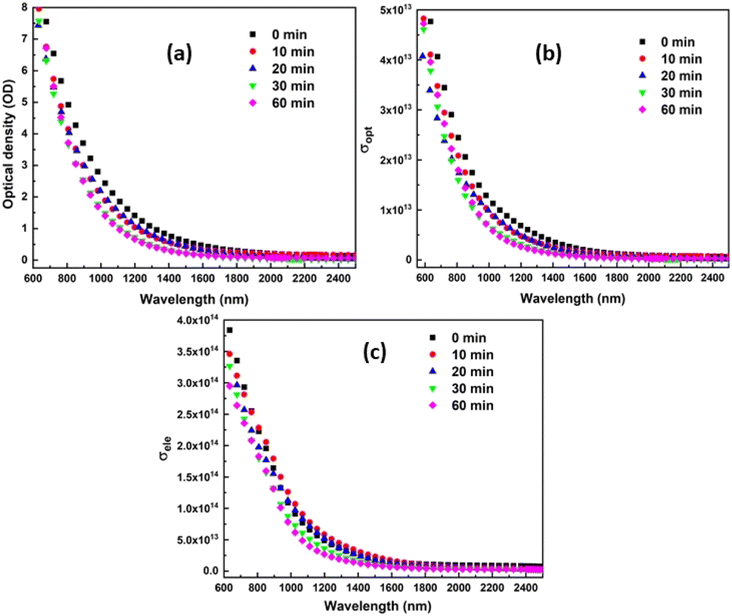 Open Access Article
Open Access ArticleCreative Commons Attribution 3.0 Unported Licence
Correction: Influence of time dependent laser-irradiation for tuning the linear–nonlinear optical response of quaternary Ag10In15S15Se60 films for optoelectronic applications
Abinash Paridaa,
D. Alagarasanbc,
R. Ganesanb,
Sagar Bisoyid and
R. Naik*a
aDepartment of Engineering and Materials Physics, ICT-IOC Bhubaneswar, 751013, India. E-mail: ramakanta.naik@gmail.com
bDepartment of Physics, Indian Institute of Science, Bengaluru, 560012, India
cDepartment of Physics, NITTE Meenakshi Institute of Technology, Yelahanka, Bengaluru, 560064, India
dDepartment of Physics, School of Applied Science, KIIT Deemed to be University, Bhubaneswar, 751024, India
First published on 26th September 2023
Abstract
Correction for ‘Influence of time dependent laser-irradiation for tuning the linear–nonlinear optical response of quaternary Ag10In15S15Se60 films for optoelectronic applications’ by Abinash Parida et al., RSC Adv., 2023, 13, 4236–4248, https://doi.org/10.1039/D2RA07981J.
The authors regret that the formula used for electrical conductivity was not dimensionally correct in Section 3.4.3 of the original article. Thus, the corresponding Fig. 6(c) was also incorrect for this article.
Consequently, Section 3.4.3 and Fig. 6 have been adjusted, and this is detailed below. An independent expert has viewed the corrected data and image and has concluded that they are consistent with the discussions and conclusions presented.
3.4.3 Optical density, optical, and electrical conductivity
The optical density (OD) of the materials is a measure of how well they can absorb electromagnetic radiation. The formula OD = α × t is used to get the OD value. According to Fig. 6(a), the optical density varies with wavelength and decreases over the course of irradiation time. The decreasing behaviour of the OD is because of the reduction in the α value. The optical and electrical conductivity of the material can provide detailed knowledge about the electronic states, and the optical conductivity could be determined by using the values of α, n, and λ in the relation, 
Gomma et al. have recently reported the formula for the calculation of electrical conductivity as follows,1
 | ||
| Fig. 6 Variation of (a) OD with wavelength, (b) optical conductivity and (c) electrical conductivity with the wavelength of laser irradiated Ag10In15S15Se60 films with different time duration. | ||
The Royal Society of Chemistry apologises for these errors and any consequent inconvenience to authors and readers.
References
- H. M. Gomma and I. S. Yahia, Toward a novel and accurate relationship between electrical and optical conductivity in opto-material sciences: new strategy, J. Comput. Electron., 2022, 21, 1396–1403 CrossRef.
| This journal is © The Royal Society of Chemistry 2023 |

